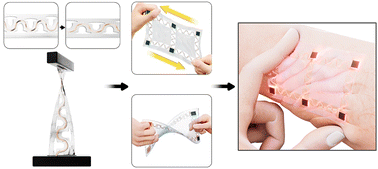Serpentine interconnects enable rigid materials to have high stretchability. They are considered to be very effective architectures to enable stretchable electronics. Therefore, research has primarily focused on exploring serpentine-based designs to enhance the stretchability of the interconnect itself. However, in practical applications, the interfacial cracks caused by repetitive stretching becomes a critical issue if serpentine interconnects are encapsulated within a polymer matrix. Here, we introduce geometrically engineered pores in a polymer matrix to suppress interfacial cracks under stretching. The serpentine interconnects with optimized pores in a polymer matrix improved mechanical stability (strain at failure, fatigue life) and electrical stability compared with those without pores. Furthermore, these strategies enabled the demonstration of a stretchable light-emitting diodes (LED) array and an electrical heater.
